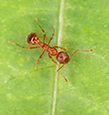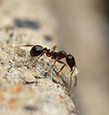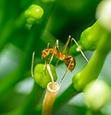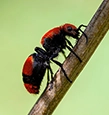Ant Facts & Information
Hawx is always reliable. Always innovative.
Get $350 Off Ant Service
20,000+ 5-STAR REVIEWS
“Connors Trader went the extra mile to make sure he listened to our needs regarding the ant problem we had.”
- Larry
“He sprayed indoors and out, swept my eaves for spider webs and took care of a couple of wasp nests.”
- Rick
“He even sprayed on my deck, which no one else has done.”
- Sue
Have you ever spotted a line of ants marching across your kitchen counter and wondered how to stop them in their tracks? Chances are, you’ve tried, but they always seem to pick back up the next day or two.
Ants are one of the most common household pests, and while a few here or there might seem harmless, an unchecked infestation can quickly get out of hand.
Let’s walk through the basics of ant identification, where ants choose to make their homes, and how to clear them out from yours for good.
Ant Identification: What Are the Main Types of Household Ants?
Argentine Ants: Light to dark brown in color and about 1/8 inch long. They form large colonies that can span multiple nesting sites.
Odorous House Ants: Brown or black and small (1/8 inch long). As their name implies, they emit a sour, rotten coconut smell when crushed.
Carpenter Ants: These are among the largest ants you’ll see—up to 1/2 inch long. They’re typically black or a combination of black and red.
Pavement Ants: Dark brown or black, around 1/8 inch long. They often nest in cracks of pavement or under concrete slabs.
Tired of your ant problem? Call Hawx Pest Control at (888) 372-9514 now and schedule an inspection of your commercial or residential property. Find your local Hawx Pest Control today!
How to Identify a Queen Ant
Where Can Ants Live?
Ants can live just about anywhere that offers food, water, and some measure of shelter. Outdoor nests are common under rocks, in soil, or within woodpiles, but ants are equally comfortable setting up shop inside wall voids and under floors.
Understanding ant behavior is key to managing an infestation. Common household ants all do the following:
- Forage for food, following scent trails laid down by scout ants.
- Establish satellite colonies when the main nest gets too large or food resources are limited.
- Thrive in moist conditions, which is why kitchens and bathrooms are frequent targets.
To make things even more complicated, ants are incredibly adaptive, so blocking one path often leads them to find another. That’s why professional help from pest control experts is the best way to keep them under control.
Signs of an Ant Infestation
If you’re unsure whether you have a full-blown ant problem or just a few stray visitors, here are some common indicators:
- Visible trails: If you see a continuous line of ants marching across floors or surfaces, chances are they have discovered a reliable food source.
- Piles of debris or frass: Carpenter ants produce sawdust-like material when they burrow through wood.
- Frequent sightings: Spotting ants around the same area daily—even just a few—usually suggests a nearby nest.
- Nesting sites: Small mounds of dirt, sand, or debris near walls, baseboards, or exterior foundations can indicate nest entrances.

“Ant behavior is simple. If you see ants lined up one after another, coming and going along what looks like an ant highway, they’re almost always going back and forth between the nesting area and a food or water source. ”
Vice President of Technical & Training Services, Entomologist
What Damage Can Ants Cause?
Ants generally aren’t destructive on the same scale as termites, but certain species, especially carpenter ants, can cause wood damage by tunneling through it to create nests. Other ants can become a nuisance by:
- Contaminating food: Colonies might raid pantries or trash bins and make whatever they touch unsanitary.
- Damaging electronics: Some species nest in appliances or circuitry, causing short circuits or mechanical failures.
- Aggravating allergies: Ants can trigger mild allergic reactions in some people.
How Do I Get Rid of Ants?
Getting rid of ants often involves being as thorough as possible. While some try home remedies or natural fixes, ants can be stubborn, and their colonies might extend deeper than you realize.
These are common approaches to addressing ant infestations—some more effective than others:
- Block entry points
- Seal cracks in foundations, gaps around doors and windows, and other small crevices.
- Repair leaky faucets or pipes, as ants are drawn to the moisture.
- Cleanliness and food storage
- Keep surfaces free of crumbs or spilled liquids.
- Store food in sealed containers and regularly empty all trash cans, not just the ones in the kitchen.
- Baits and traps
- Place ant baits along trails or near entry points. The workers carry poisoned bait back to the colony, targeting the queen and nest.
- Insecticides
- Sprays or powders can help reduce visible ant activity, but they tend only to eliminate a fraction of the colony.
Although DIY attempts can reduce the number of ants, most “natural” and store-bought methods aren’t enough to eradicate a well-established nest. Ants often have extensive networks with several different satellite colonies. Missing even a portion of the colony can allow it to rebuild quickly. This is why professional pest control services are the best, most reliable solution.
Let Hawx Handle Your Ant Problem
If you’re tired of battling an ant infestation on your own, Hawx Pest Control can find and eliminate the source. We understand ants’ foraging patterns, nesting habits, and how to target them at the root so you don’t have to deal with persistent invasions. Our team uses the latest tools, local knowledge, and proven methods to thoroughly address infestations—whether a handful of small ants trailing through your kitchen or a more serious carpenter ant problem.
Get rid of your ant problem for good. Contact Hawx Pest Control today for a free consultation. We’ll provide a detailed inspection and customized treatment plan to remove your ant infestation and restore peace and comfort to your home.
Ant Identification: What Are the Main Types of Household Ants?
Ants can vary widely from species to species, so it's important to know how to identify ants that typically invade homes.
Read more about ants

Most Painful Insect Stings – The Schmidt Pain Index
Did you know there’s an official pain scale for insect stings? It is called the Schmidt Pain Index for Stings. It was created by an

What Do Carpenter Ants Eat?
If you think you might be dealing with carpenter ants, you’ve probably asked yourself, “what do carpenter ants eat?” Spoiler alert: it’s not wood. Like
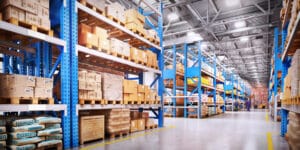
How to Get Rid of Ants in a Warehouse
Handling ants in a warehouse can be a major hassle—especially when food products, beverages, or other sensitive materials are involved. While a clean environment is
Turn to Hawx Pest Control for quality solutions today! Contact us and let us inspect your problem in order to get started. We proudly serve cities throughout the country.




